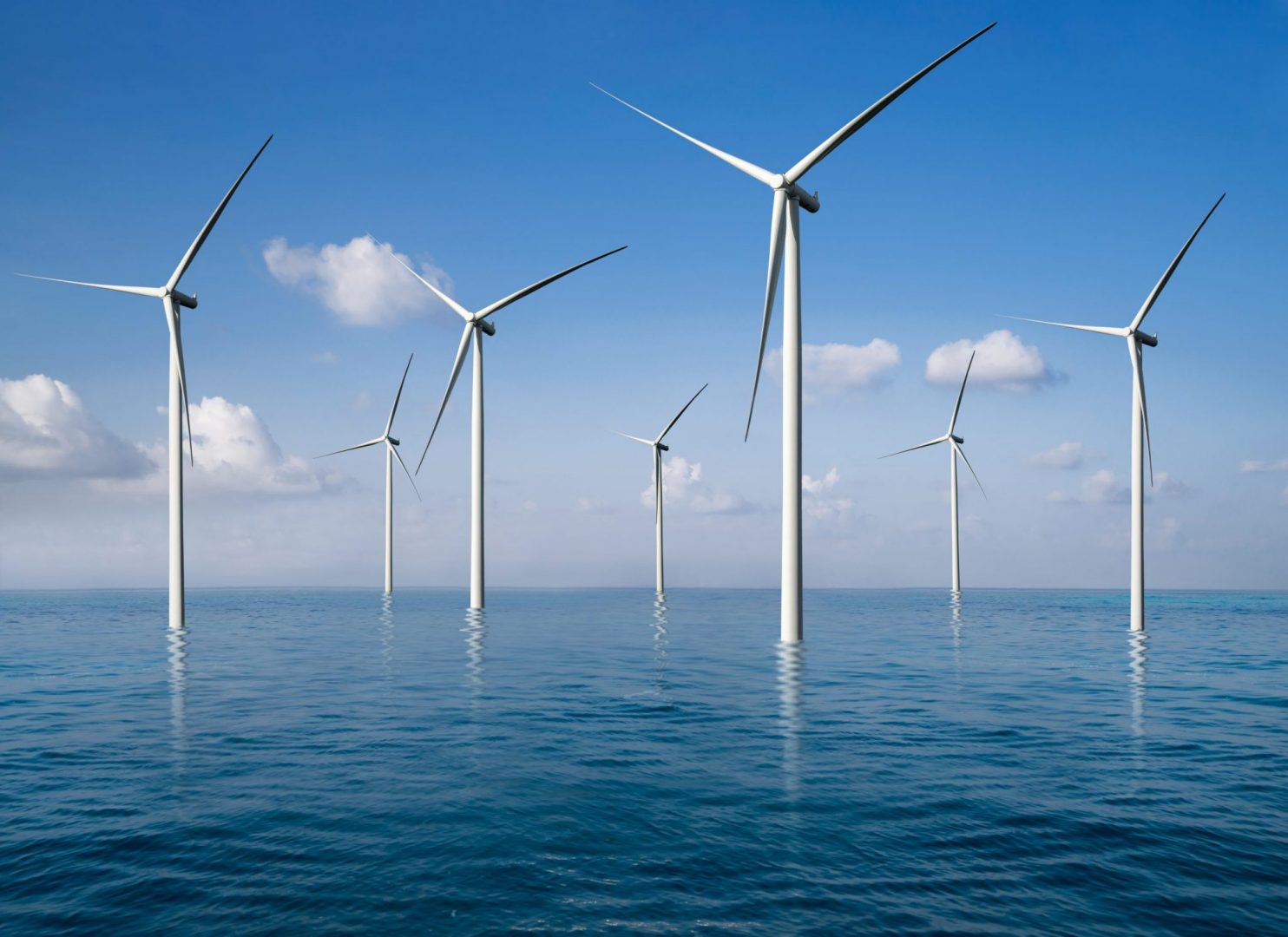Expensive Offshore Wind Farms: A Shift In Industry Favor?

Table of Contents
The Rising Costs of Offshore Wind Farm Development
The development of offshore wind farms represents a significant financial undertaking, with several key factors driving up the overall cost.
High Initial Investment Costs
The initial capital expenditure for offshore wind projects is staggering. This includes:
- Turbines and Foundations: The cost of procuring and installing massive wind turbines, along with their robust foundations designed to withstand harsh marine conditions, accounts for a substantial portion of the budget. These costs are significantly higher than for onshore wind turbines due to the specialized engineering and deployment methods required.
- Subsea Cables and Grid Connection Infrastructure: Laying and maintaining subsea cables to connect the offshore wind farm to the onshore grid is a complex and expensive process, often involving significant upfront investment in new substations and transmission lines. This can represent a major cost overrun, particularly in remote locations.
- Site Surveys and Permitting: Thorough environmental impact assessments, detailed site surveys, and navigating complex regulatory processes contribute to significant pre-construction expenses. The time required for permitting further increases the overall project timeline and financing costs.
- Inflation and Supply Chain Issues: Recent global inflation and supply chain disruptions have exacerbated the already high costs associated with materials, labor, and specialized equipment, leading to significant budget overruns for many projects.
Complex Engineering and Installation Challenges
Offshore wind farm construction presents unique engineering and logistical hurdles:
- Deep Water Installation: Installing turbines in deep waters necessitates the use of specialized vessels and techniques, significantly increasing the cost compared to shallower water installations or onshore wind farms.
- Harsh Weather Conditions: Offshore locations are subject to unpredictable weather, often delaying construction and increasing the risks associated with installation and maintenance. This necessitates robust designs, specialized equipment, and contingency plans, all adding to the project's expense.
- Specialized Vessels and Equipment: The deployment of offshore wind turbines requires specialized vessels like heavy-lift jack-up barges and crane vessels, which are expensive to charter and operate.
- Logistical Complexities: The coordination of multiple contractors, vessels, and equipment across a remote offshore location presents significant logistical challenges, potentially leading to delays and increased costs.
Grid Connection Costs
Connecting offshore wind farms to the onshore grid is often a major cost driver:
- Substations and Transmission Lines: New onshore substations and high-voltage transmission lines are frequently required to handle the large amounts of electricity generated by offshore wind farms, adding considerable expense to the overall project. The distance between the offshore wind farm and the onshore grid significantly impacts these connection costs.
- Grid Integration Challenges: Integrating large amounts of intermittent renewable energy from offshore wind farms into existing electricity grids requires sophisticated grid management systems and potentially grid upgrades, adding to the financial burden.
- Cost Overruns in Grid Infrastructure: Projects often encounter cost overruns during the grid connection phase, driven by unexpected technical challenges, regulatory delays, or unforeseen environmental considerations.
Alternative Renewable Energy Sources Gaining Traction
The high cost of offshore wind is prompting a closer look at alternative renewable energy sources:
Onshore Wind and Solar Power Competitiveness
Onshore wind and solar power projects generally offer a lower levelized cost of energy (LCOE) compared to offshore wind:
- LCOE Comparisons: Studies consistently show that onshore wind and solar often have lower LCOE, primarily due to lower capital costs and easier installation processes.
- Faster Deployment Times: Onshore wind and solar projects typically have shorter lead times from planning to operation, reducing financing costs and accelerating returns on investment.
- Lower Maintenance Costs: Onshore wind and solar farms generally require less maintenance than offshore wind farms, leading to lower operational expenses over their lifetime.
Government Subsidies and Policy Shifts
Government policies play a significant role in shaping the renewable energy landscape:
- Government Policies and Incentives: While many governments heavily subsidize renewable energy, the level of support may vary significantly between offshore and onshore projects, influencing investment decisions.
- Impact of Carbon Pricing: Carbon pricing mechanisms can make renewable energy more competitive compared to fossil fuels, but their effectiveness may vary depending on the specific design and implementation.
- Potential for Policy Changes: Future policy changes could shift the balance of support towards less expensive renewable energy options, potentially impacting the attractiveness of offshore wind investments.
Technological Advancements in Other Renewables
Innovation in other renewable energy sectors is also impacting the competitiveness of offshore wind:
- Floating Offshore Wind: Advances in floating offshore wind technology are promising to reduce costs by enabling the deployment of wind farms in deeper waters.
- Wave and Tidal Energy: Technological advancements in wave and tidal energy are steadily improving their cost-effectiveness and scalability, offering potential alternatives to offshore wind in specific geographic locations.
- Research and Development Investments: Ongoing research and development investments in various renewable energy technologies could lead to significant cost reductions in the future, potentially altering the competitiveness of offshore wind.
Factors Supporting Continued Investment in Offshore Wind
Despite the high costs, several factors continue to support investment in offshore wind:
Energy Security and Geopolitical Considerations
Offshore wind plays a critical role in national energy security strategies:
- National Energy Security Strategies: Many countries are prioritizing energy independence and reducing their reliance on imported fossil fuels, making offshore wind a strategic investment despite its cost.
- Geopolitical Factors: Geopolitical instability and supply chain disruptions highlight the importance of diversifying energy sources and investing in domestically produced renewable energy.
Technological Advancements in Offshore Wind
Technological innovation is steadily reducing the cost of offshore wind:
- Larger Turbine Sizes: Larger turbine sizes are becoming more common, leading to increased energy production per turbine and reduced overall costs.
- Improved Foundation Designs: Innovation in foundation design and materials is leading to more efficient and cost-effective solutions for installing turbines in various seabed conditions.
- Automated Installation Techniques: Automation is improving installation efficiency and reducing the labor costs associated with offshore wind farm construction.
Scale and Economies of Scale
Larger projects and increased production are expected to lower costs:
- Project Size and Cost Efficiencies: Larger offshore wind farms can achieve cost efficiencies through economies of scale in manufacturing, installation, and operations.
- Learning Curve Effects: As the industry matures and more projects are constructed, learning curve effects are expected to reduce costs over time.
Conclusion
The high cost of offshore wind farms is a significant challenge, and the increasing competitiveness of onshore wind and solar power is undeniable. However, factors such as energy security, geopolitical considerations, and technological advancements continue to drive investment in this sector. The future of renewable energy relies on finding a balance between ambitious targets and economic realities. Further analysis of the economics of expensive offshore wind farms is crucial to ensuring a sustainable and affordable energy transition. Continued innovation, coupled with supportive policy frameworks, will be critical in determining the long-term viability and cost-effectiveness of this vital renewable energy source.

Featured Posts
-
 Seismic Political Shift Labour Councillor Joins Reform
May 03, 2025
Seismic Political Shift Labour Councillor Joins Reform
May 03, 2025 -
 Siete Nuevos Vehiculos Para El Sistema Penitenciario
May 03, 2025
Siete Nuevos Vehiculos Para El Sistema Penitenciario
May 03, 2025 -
 Fortnites In Game Store Practices Under Fire In New Lawsuit Against Epic Games
May 03, 2025
Fortnites In Game Store Practices Under Fire In New Lawsuit Against Epic Games
May 03, 2025 -
 Laura Keller Surge De Biquini Em Retiro De Tantra Yoga
May 03, 2025
Laura Keller Surge De Biquini Em Retiro De Tantra Yoga
May 03, 2025 -
 Is David Tennant Returning To The Harry Potter Universe On Max Doubtful
May 03, 2025
Is David Tennant Returning To The Harry Potter Universe On Max Doubtful
May 03, 2025
